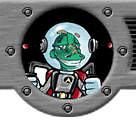





 |
 |
 |
||
 |
 |
 |
||
| |
|
|
|
|
| Home : Cognitive Module : Tools | ||
Tools of Lost in Space
ConsequencesNatural and Logical ConsequencesSometimes we have difficulty seeing the difference between consequences and punishment. A consequence can be natural or logical. For example, if you cut your finger, it will bleed and it will hurt -- natural consequence. A logical consequence of cutting your finger might include someone reviewing proper cutting practices with you. You will no doubt do that mental review without prompting. There can be both natural and logical consequences to actions, and more than one consequence for each act. Punishment is usually inflicted by someone outside the situation. Behaviorally, it is intended to stop or lessen an act, but in practice, it often serves as an escape valve for the person who feels offended or responsible for the well being of a person or group. Upset by the cut finger, a parent or teacher may verbalize feelings, expressing anguish by saying, "That was stupid," or "What were you thinking? You know better than to use a knife that way." In addition, someone might refuse to let you use a knife again until ... These responses, rather than natural or logical, appear punitive. They are one-sided venting of emotion, often put the listener on the defensive, increase the intensity of emotions and seldom lead to better understanding of cutting practices, and tend to damage relationship rather than build trust or support better actions.. The following examples frame logical responses to common classroom actions. To work effectively as consequences, they need to be used dispassionately, without verbal remonstrance or blame. Example: A student shoves in line. The teacher says "Oops, let's move to the back of the line," or "Please walk with me so the shoving stops." The poor choice is circumvented, noted, alleviated, but the student is not punished, belittled or given undue attention for misbehavior.
ModelingModeling is performing something that will be observed by another person and then copied. The person who is modeling can be purposefully exhibiting the behavior so it will be included in another person's repertoire but it also can be a behavior that is copied without anyone realizing it. Modeling is often seen in day-to-day life. Who has not been shocked to hear a young child cursing and wondered where it came from? How many children come home from school and mimic the teacher - often in a recreation of school -- and of course, all of us have been mocked or mocked someone else, a caricature of behaviors we saw and captured. Clues in antecedentsClues in antecedents are the reasons or triggers for a behavior. They are the messages that a person sends to themselves to justify a behavior. To find a clue to antecedents, one can often listen to the verbal message, look a the behavior and discover the message the person sends to self. If a large woman is always talking about how she just starves herself and eats next to nothing because of a slow metabolism, each piece of the message may contribute to increased eating. A child who runs in and says, "I didn't do anything. He started it!" has sent himself a cognitive message that gives self permission to act out. Someone who is nervous before a speaking engagement may be saying - it's just the little preparation by body does to get revved up. I know this will help me get pumped up enough to do well. On the other hand, the person may be saying "I don't have anything to say, and I'm just going to make a fool of myself." The message -- that cognitive internalization -- often sets up the behaviors that follow. Contextualized instructionThis is the premise that a student should only be taught things they already now something about, things they are interested in, and things that are essential for the job they will have in the future. Using this format, the student would not be taught something unless it was essential in the student's view and would lead to success in the world of work. This notion of school is far from new. It is often bolstered by those who want to stay with the academic essential and teach those things that are directly related to the world today. One could make an argument for reading the daily paper, but not for reading Chaucer, the classics, or requiring art or music history unless it contributed directly to the student's career choice. Non-verbal signalsWhen a person uses non-verbal signals, they are sending messages that are rich in context without having to verbalize the thoughts. Non-verbal signals are often thought to be critical to the verbalizations, since the body is an eloquent tool for sharing the affect of a message. In discipline, a smile or a smirk in response to a request says a lot. A student can get out a book by slamming it around roughly or tenderly opening it. "I love cafeteria food," followed by a grimace or a wink tells different things. With-it-nessWith-it-ness is the ability to be constantly alert to the sights and sounds of the classroom. It is mastery of the non-verbal and the ambiance while still teaching and staying alert to the needs of one student or the task at hand. A term that was first coined by Kounin, to express the notion of a teacher having eyes in the back of his head, it has become part of the repertoire of the master teacher. Once you have completed this topic you should: Go back to Tools
|
||
| E-mail J'Anne Ellsworth at Janne.Ellsworth@nau.edu | ||
|
Course Created by J'Anne Ellsworth & Center for Technology Enhanced Learning Copyright
© 2001 Northern Arizona University |
 |
 |
 |
 |
 |
|